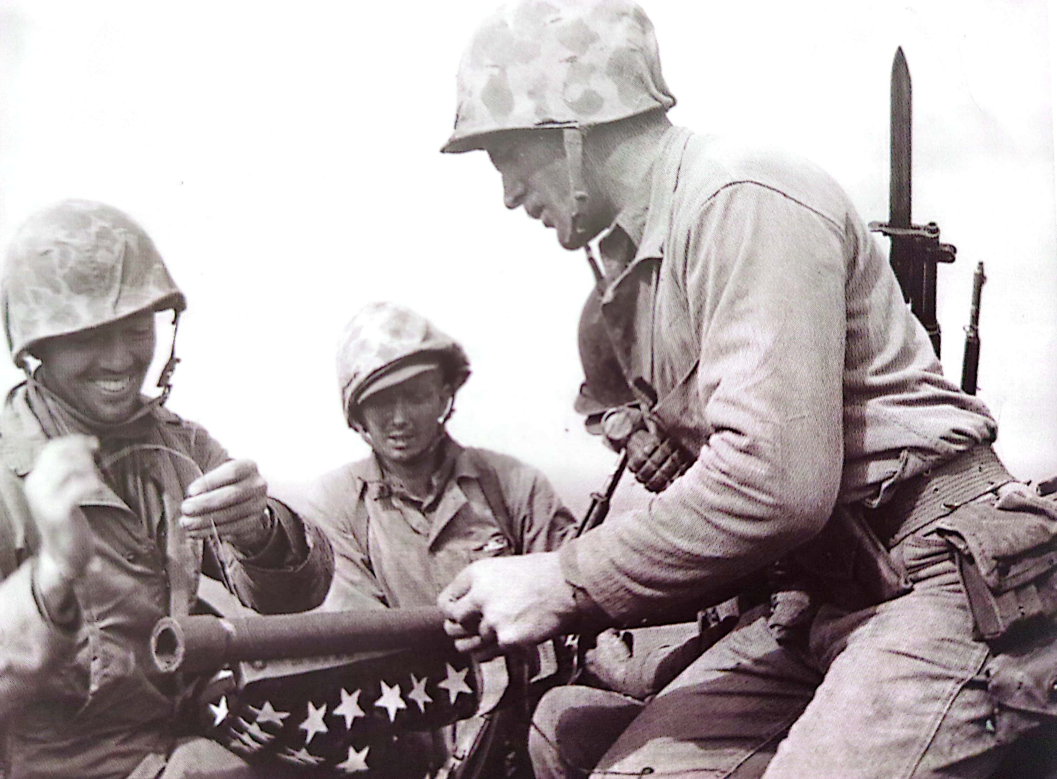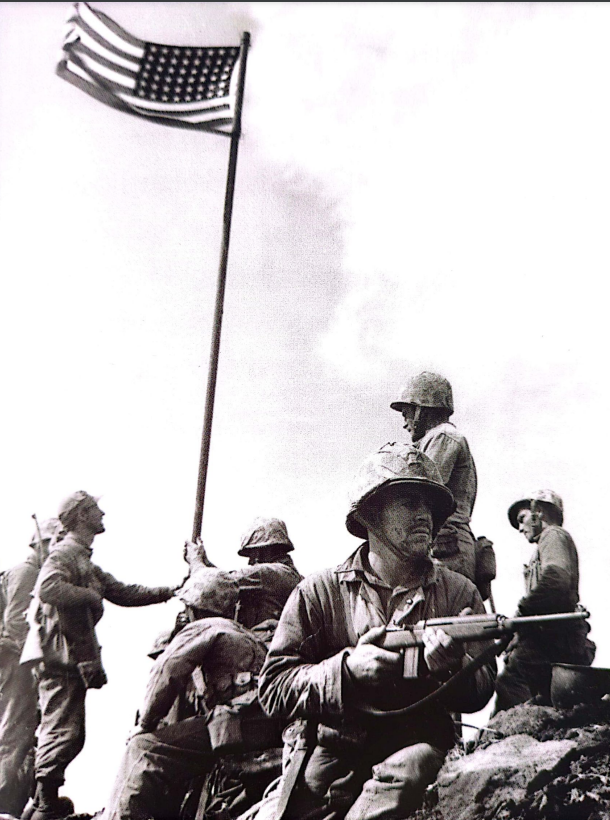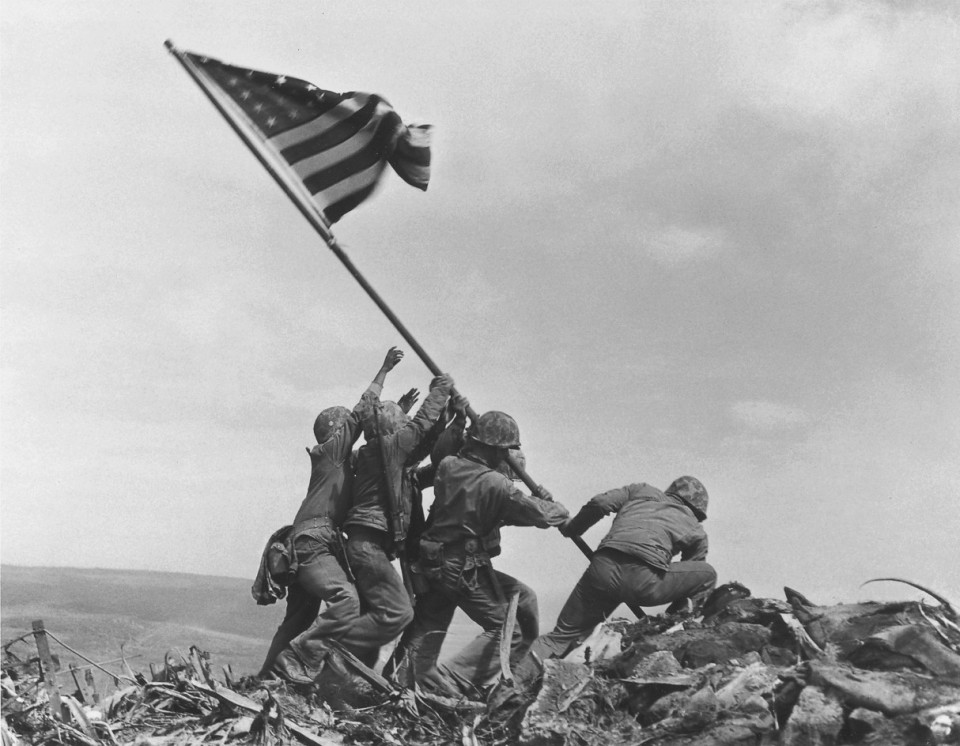Operation Hot Rocks

The mission to capture Mount Suribachi was named Operation Hot Rocks due to the sulfur vents on the volcano, which also hindered the Marines' progression.
"Mount Suribachi"
"Battle of Iwo Jima", Britannica
"The 5th Division’s 28th Marine Regiment began its assault of Mount Suribachi, which was garrisoned by 2,000 Japanese troops and extensively honeycombed with defensive positions and tunnels".
"Battle of Iwo Jima", Naval History and Heritage Command
"It [Suribachi] looked like a gigantic loaf of bread on one end of a huge pancake."
- Letter to Chief of Naval Operations
"They could see us, but we couldn't see them. And that was the very confusing part."
- Private First class John Douglas
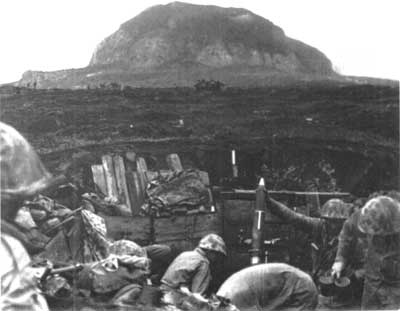
Marines overlooking Mount Suribachi | National Parks Service
The Marines started their ascent on Mount Suribachi on February 20. The terrain gave the Marines no cover from the Japanese emplacements. Meanwhile, some Japanese were focusing their weapons on the Navy ships at sea.

"Kamikaze Suicide Bombers"
"Raising the Flag on Iwo Jima", Bill of Rights Institute
"The kamikaze... were young Japanese fliers who piloted their explosive-laden planes into American ships."
"Raising the Flag on Iwo Jima", Bill of Rights Institute
"Kinpei Teraoka made the decision to send Kamikaze to hit US ships near Iwo Jima."
The Tomb of Iwo Jima, Dan King
"The escort carrier Bismark was lost and fleet carrier Saratoga... was so badly damaged that she had to return Stateside for repair".
Naval History and Heritage Command
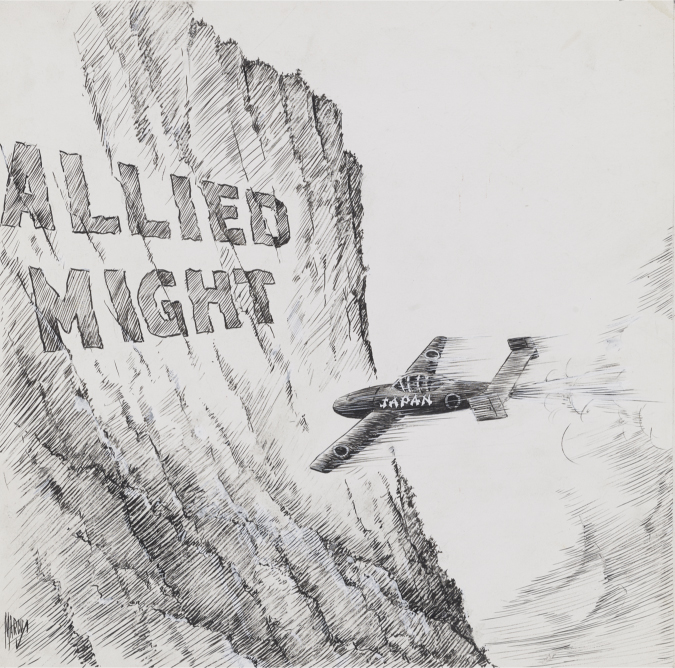
"Kamikaze" | Bill of Rights Institute
Even though the naval support at sea suffered significant losses, the 28th Marines on Mount Suribachi were slowly making progress.

"The Flag's Up!"
- Richard Jessor
"The 28th Marines... lurched forward against Suribachi's northern face, cleaned out the last bunkers, pillboxes, and caves in its zone".
Two Flags over Iwo Jima, Eric Hammel
"Marines relied on their M2 flamethrowers, bazookas and... tanks to clear out enemy fortifications. Grenades became the soldiers’ most handy weapons... rolling them down hills and tossing them into caves."
"How US Marines Won the Battle of Iwo Jima", HISTORY
"When the Americans reached the summit with its gaping crater... Four men raised the flag... other soldiers stood guard with rifles in case of an attack."
The Battle of Iwo Jima: Turning the Tide of War in the Pacific, Steven Otfinoski
"Marines twice raised the American flag on Suribachi’s summit. The second flag raising was photographed by... Joe Rosenthal".
"Battle of Iwo Jima", Britannica
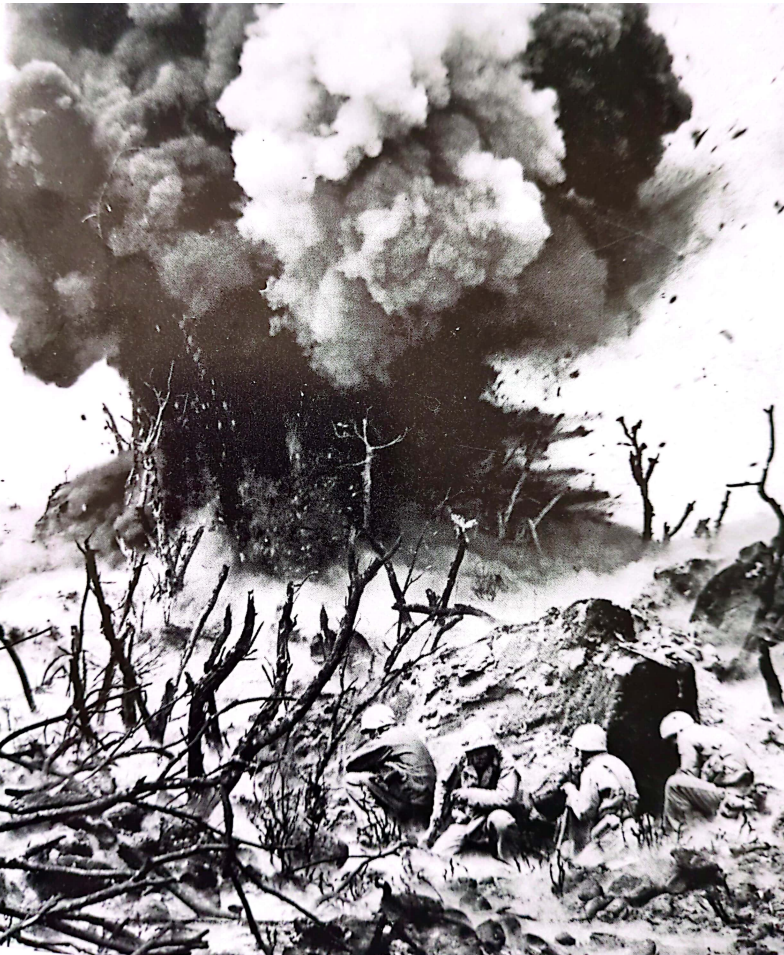
"Blast engulfs a three-tiered bunker tied in with numerous front-line caves... and pillboxes" | Two Flags over Iwo Jima
"The celebration went on for many minutes. It was a highly emotional, strongly patriotic moment for all of us."
- Private First Class Ray Jacobs
“Atop 550-foot Suribachi Yama... Marines of the Second Battalion, 28th Regiment, Fifth Division, hoist the Stars and Stripes, signaling the capture of this key position.”
- Joe Rosenthal
"Suribachi has fallen, Suribachi has fallen."
- Captain Samaji Inouye
"The Battle Of Iwo Jima: The Incredible Story Of Survival", Real History, 2022
The success on Mount Suribachi on February 23 marked a huge step towards turning the course of the war, but the Marines still had to capture the rest of Iwo Jima. The Japanese were dismayed by the loss of Suribachi, making them even more determined to defend the rest of the island with their lives.

